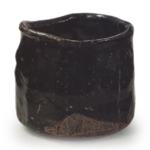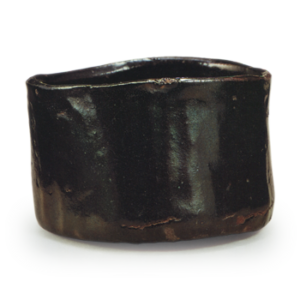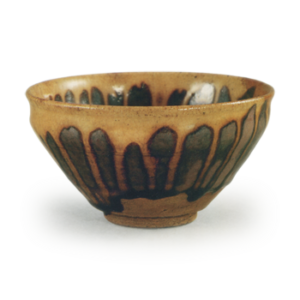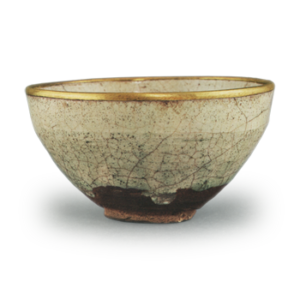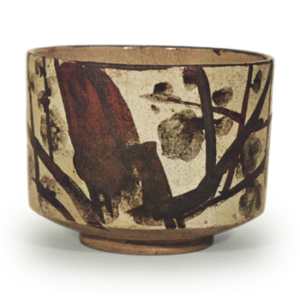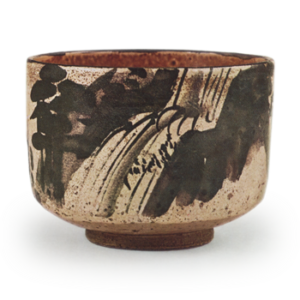
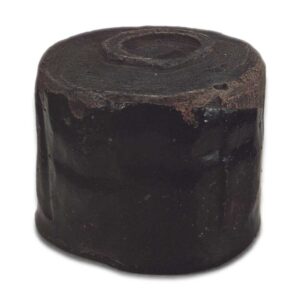
Height: 8.5-8.8cm
Diameter: 10.0-10.2cm
Foot diameter: 5.0cm
Height: 0.2cm
The pottery with a jet-black glaze that was first made in the Momoyama period is commonly referred to as Setoguro. Although it is called Setoguro, it was actually made in Mino, but in the Momoyama period there was no distinction between Seto and Mino.
Setoguro was made in the Tensho period, so it is also called Tenshoguro, and it is also called Hikidashi-guro because it is pulled out of the kiln while it is still bright red and then cooled quickly. The reason that there are not as many Setoguro pieces left as there are Shino or Oribe pieces is that the number of tea bowls that can be pulled out of the smoke vents on the side of the kiln is limited, and only four or five can be fired in one kiln at most.
The Obara wood is particularly good for making tea bowls, and has been famous since ancient times as the best Setoguro tea bowls, but the name is thought to have come from the fact that the wood from the Obara (Ohara) mountains is called Kuroki, and the tea bowls are black. However, the exact origin is not clear.
The body is made of grayish-white, rough clay, but the unglazed part of the waist is burned and has a light brown color.
The entire inside and outside is covered in a glossy jet-black glaze, but the inside is burnt a light brown. When this was pulled out of the kiln, the other parts cooled quickly and turned black, but the inside only cooled gradually, and so it is thought that the brownish-red color of the glaze, which is commonly referred to as Koseto glaze, was formed. The shape is bold and firm, and the body has thick brush marks on the surface, making it an unparalleled piece of Seto-guro.
The body is almost straight, with a slightly wider base, and the thick mouth is slightly curved. As is written in an old tea book, “The mouth is made like a rice container, the body is made like a sword, the top is made thin, and the mouth has a cut around it”, the inside of the mouth has been carved with a wooden spatula. The lower part of the body is exposed, but the foot ring is low and small. It has been roughly carved out with a wooden spatula, but one side is thick and the other side is thin, and a large helmet cap stands firmly.
The accessories include a bag made of light blue damask, a curved box with a cherry blossom-patterned lacquer finish, and a yellow lacquered box with the words “Koharaki” written on it, which is said to be the handwriting of Sen no Rikyu. The outer box is made of paulownia wood and is inscribed on the front with the words “Setoguro teacup” and on the underside of the lid with the words “This teacup is a strange work made by Setoguro from Edo.
It is said that it was originally owned by Rikyu, and then passed to Edo and then back to Osaka. In the Meiji era, it was owned by Akahoshi Yanosuke, but in 1917 it was sold at auction to the Akahoshi family for 21,000 yen, and became the property of Masuda Dono. After the war, it left the Masuda family, but it is still known as the first great Setoguro tea bowl.

